MIDI sequencing is the silent hero behind countless iconic tracks in the music industry.
It can breathe life into a static melody, create complex sounds, and help you unlock creative avenues previously unimagined.
Plus, with the rapid advancements in digital music technology, MIDI sequencers have evolved from basic tools to unparalleled music production powerhouses.
That’s why we’re diving deep into everything you need to know about MIDI sequencers.
This way, you can enhance your understanding and harness your MIDI sequencer’s endless creative potential.
In today’s article, we’ll be breaking down:
- What a MIDI sequencer is ✓
- The rise of MIDI in music production ✓
- The importance of MIDI sequencers in electronic music ✓
- MIDI sequencers vs. MIDI controllers ✓
- Expert tips, tricks, and techniques for advanced MIDI sequencing ✓
- How to connect and integrate MIDI gear ✓
- Insights on specialized MIDI sequencing tools ✓
- Drum machines, arpeggiators, and samplers ✓
- Much more ✓
By the end of this article, you’ll be equipped with all the MIDI sequencing tips, tricks, and techniques needed to transform your audio tracks completely.
Plus, create patterns and sequences to help get your music the recognition it deserves.
So, let’s dive in…
Table of Contents
Introduction to MIDI Sequencing
The digital music realm has evolved rapidly in the last decade, setting a high bar for producers and electronic musicians.
MIDI sequencing is at the heart of this evolution, so let’s discuss its significance and nuances.
-
The Rise of MIDI in Digital Music Production
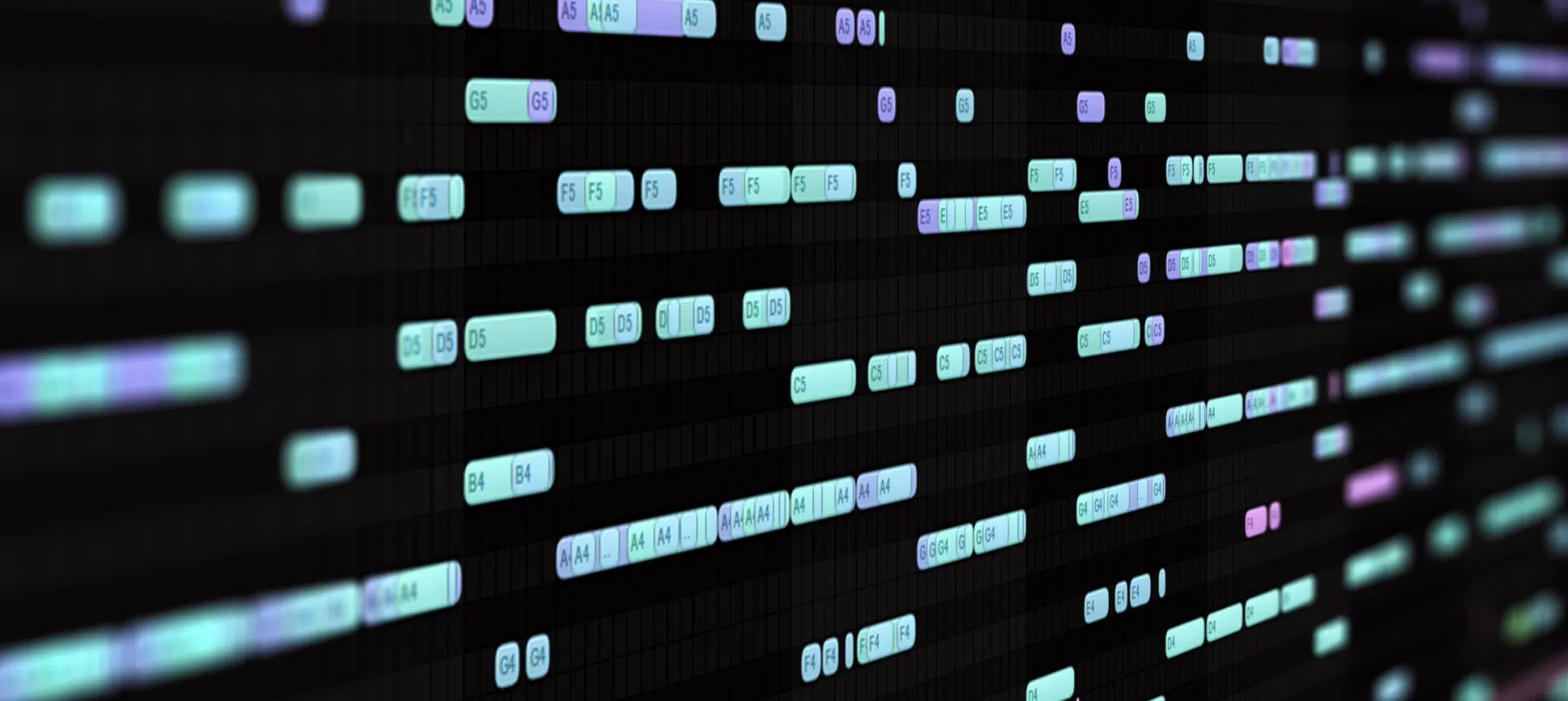
MIDI (Musical Instrument Digital Interface) is a technical standard that describes a communications protocol, digital interface, and electrical connectors.
It connects various electronic musical instruments, computers, and related audio devices.
In simpler terms, it’s an intricate language that allows musical devices to communicate and share information.
Unlike audio signals which represent sounds that you hear, MIDI data represents music-related parameters such as:
- Pitch
- Velocity
- Modulation
Launched in the early ’80s, MIDI transformed music production.
Before that, compatibility between devices from various brands was a significant challenge.
With MIDI’s universal language, devices like synthesizers and drum machines (like the legendary Roland TR-808) harmoniously communicated.
This enabled new and exciting musical explorations.
As technology progressed, MIDI seamlessly integrated with emerging digital audio workstations (DAWs).
This allowed producers to combine the tactile feel of hardware sequencers with the endless possibilities of software, further drafting, editing, and refining their compositions.
DAWs leveraged MIDI’s potential to its fullest 一 giving birth to genres and sounds previously unimaginable.
In today’s music landscape, MIDI remains indispensable.
Its influence goes beyond connecting devices; it’s the foundation of most modern music compositions and beat productions.
NOTE: The recent introduction of MIDI 2.0 promises even more capabilities and ensures that this protocol remains vital in the ever-evolving world of music technology.
As producers continue to push boundaries, it’s clear that MIDI’s role will only grow and continue to shape the sound of the future.
-
Importance of MIDI Sequencers in Electronic Music
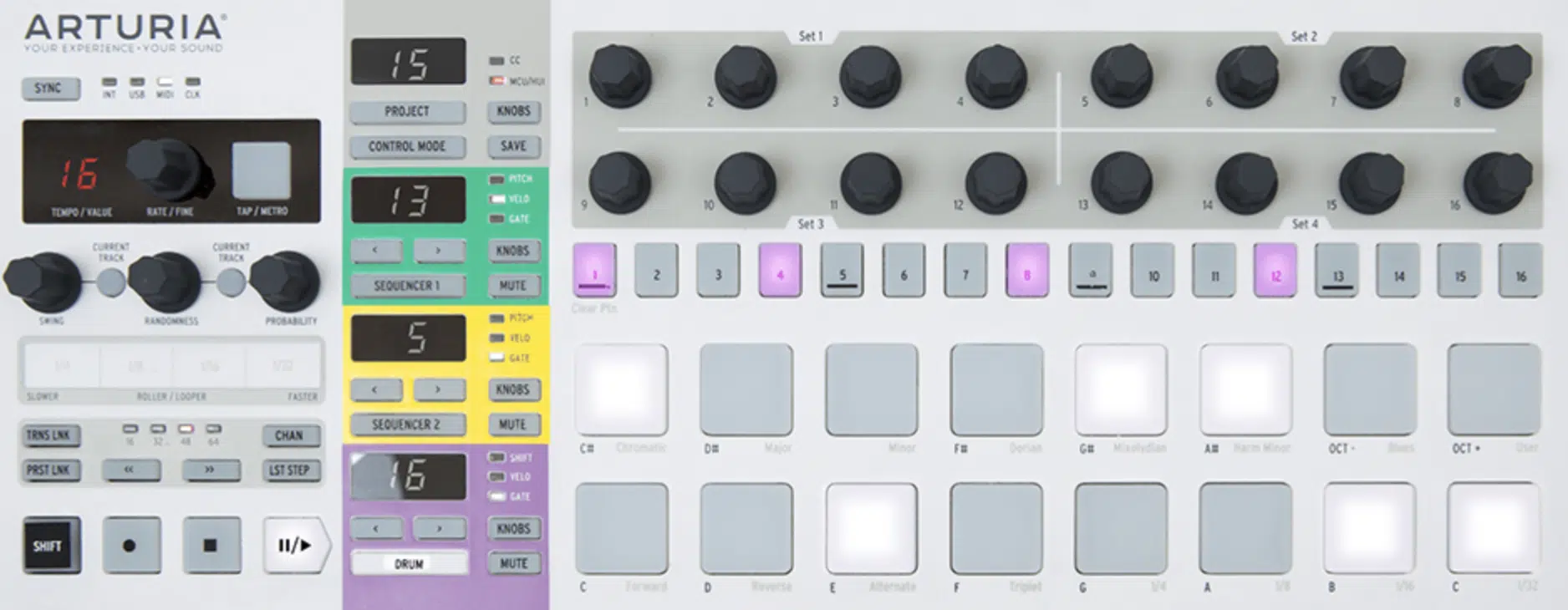
If you’re an electronic musician, you know that a fire sequence is the true heart of any EDM track.
Sequences are simply patterns that:
- Repeat
- Evolve
- Transition
- Captivate
MIDI sequencers are pivotal tools in designing and refining these sequences.
By offering the flexibility to manipulate individual notes, rhythms, and even automate parameters, MIDI sequencers are indispensable for the modern producer.
The software realm, with giants like Ableton Live and FL Studio, places powerful MIDI sequencers at a producer’s fingertips.
It’s not just about laying down beats 一 it’s about sculpting audio.
While electronic music has been around for decades, it’s the efficiency, control, and adaptability of MIDI sequencers that have driven its explosive growth.
Needless to say, having an intriguing, addicting sequence is crucial as a music producer, so a good MIDI sequencer is key.
-
MIDI Sequencer vs MIDI Controllers: Breaking it Down
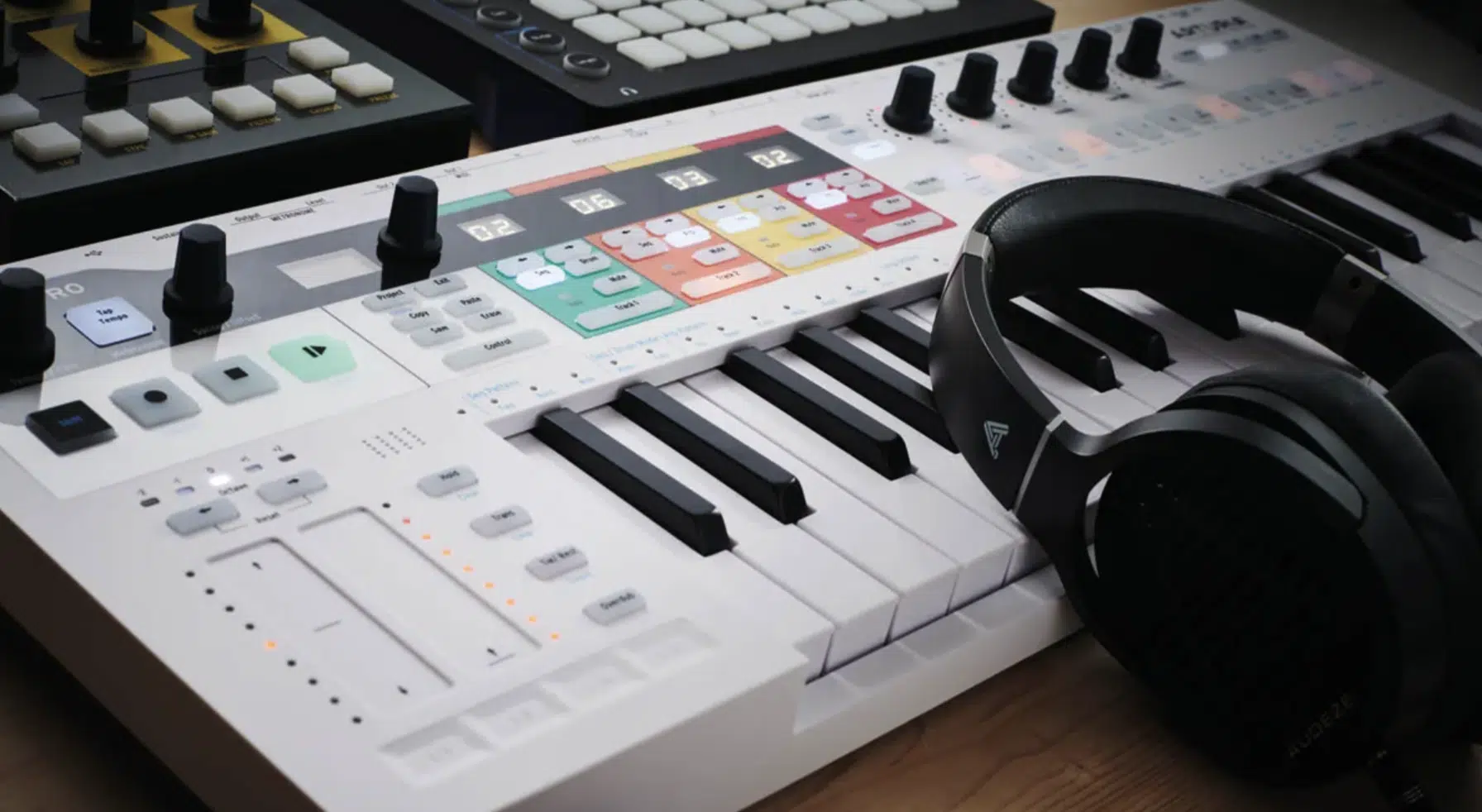
Both MIDI sequencers and MIDI controllers are integral parts of a digital music studio.
Therefore, as a music producer, you need to be able to differentiate between these two unique entities.
- A Sequencer 一 Orders a series of notes to play in a specific sequence.
- A MIDI Controller 一 Serves as an input method for your software.
Think of it as a bridge between your creative impulse and the software capturing it; whether it’s a keyboard or pad-based device.
A MIDI controller often come equipped with knobs, buttons, and sliders that can be mapped to various functions of your DAW.
This provides you with unmatched tactile control over your software.
However, it’s the MIDI sequencers that empower you to structure, organize, and refine your musical ideas into a complete track.
Incorporating both in your setup allows for an intuitive flow from inspiration to creation, hardware to software.
This will significantly enhance your audio tracks and streamlining your production process.
-
Hardware MIDI Sequencers vs. Software-Based Sequencers
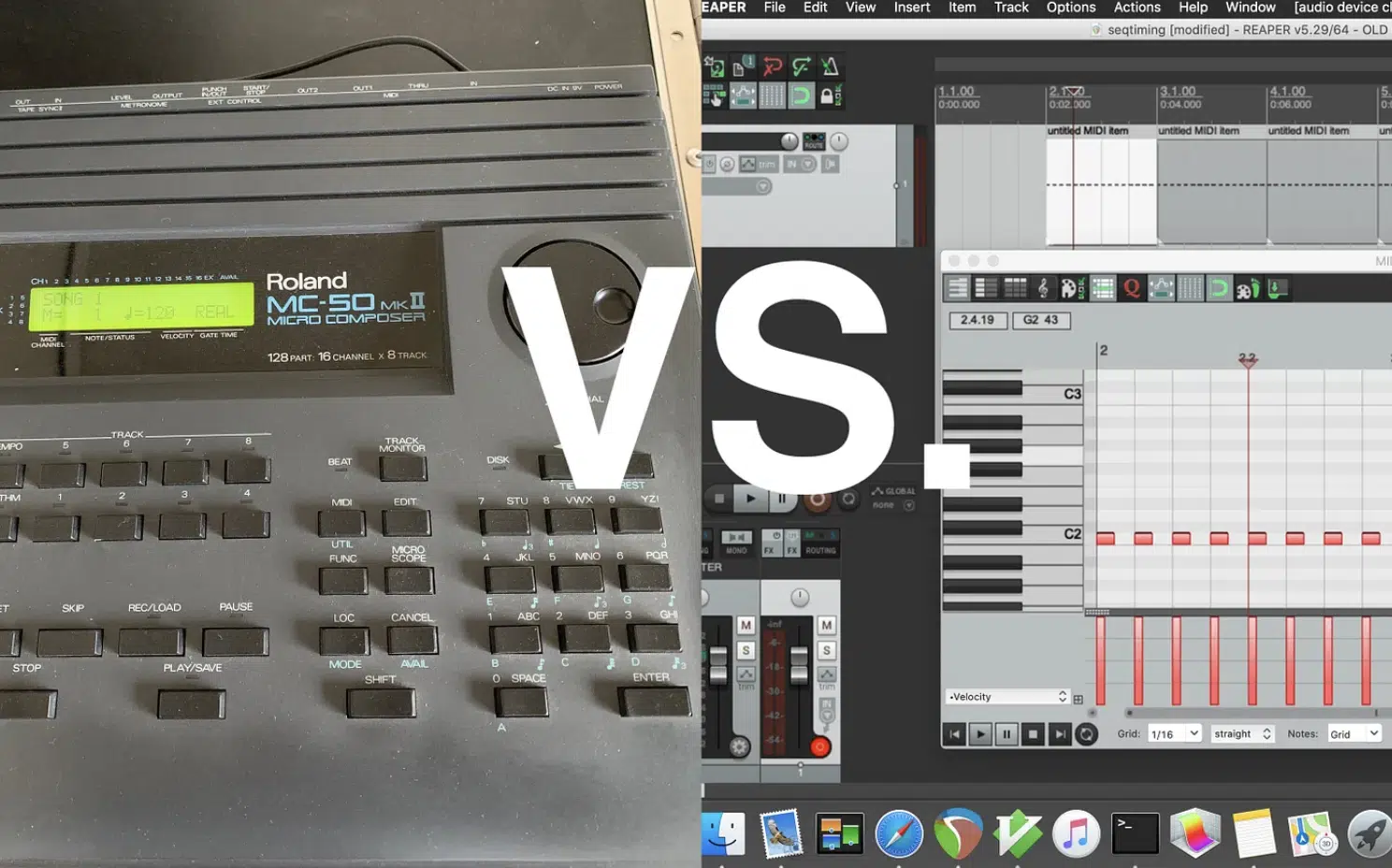
The debate between a hardware MIDI sequencer, and their audio software counterparts is as old as music production itself.
Each has its merits and plays a specific role in the studio, whether its a professional studio or home studio.
A hardware MIDI sequencer, like the revered Beatstep Pro or Squarp Pyramid, offer tactile feedback that some music producers and audio engineers swear by.
The feeling of turning a real knob or sliding a fader is irreplaceable for many.
This alone makes a hardware MIDI sequencer extremely appealing and nostalgic to some.
Software-based sequencers bring unparalleled convenience.
You can set up a mobile studio anywhere with a laptop and MIDI controller 一 from a crowded cafe to an airplane.
The decision often boils down to personal preference and your process of making a song mode.
But one thing’s for certain…
Whether you’re knocking out beats on an external hardware device or drawing notes in a software sequencer, MIDI remains the underlying magic of sound.
Diving Deep: Tools & Techniques in MIDI Sequencing
Before we dive deep into MIDI sequencing tools and techniques, it’s worth noting that mastering MIDI sequencing is like learning an instrument.
With the right approach, your sequencer can be as expressive as any guitar or piano.
-
The Role of Step Sequencers in Modern Beat Production
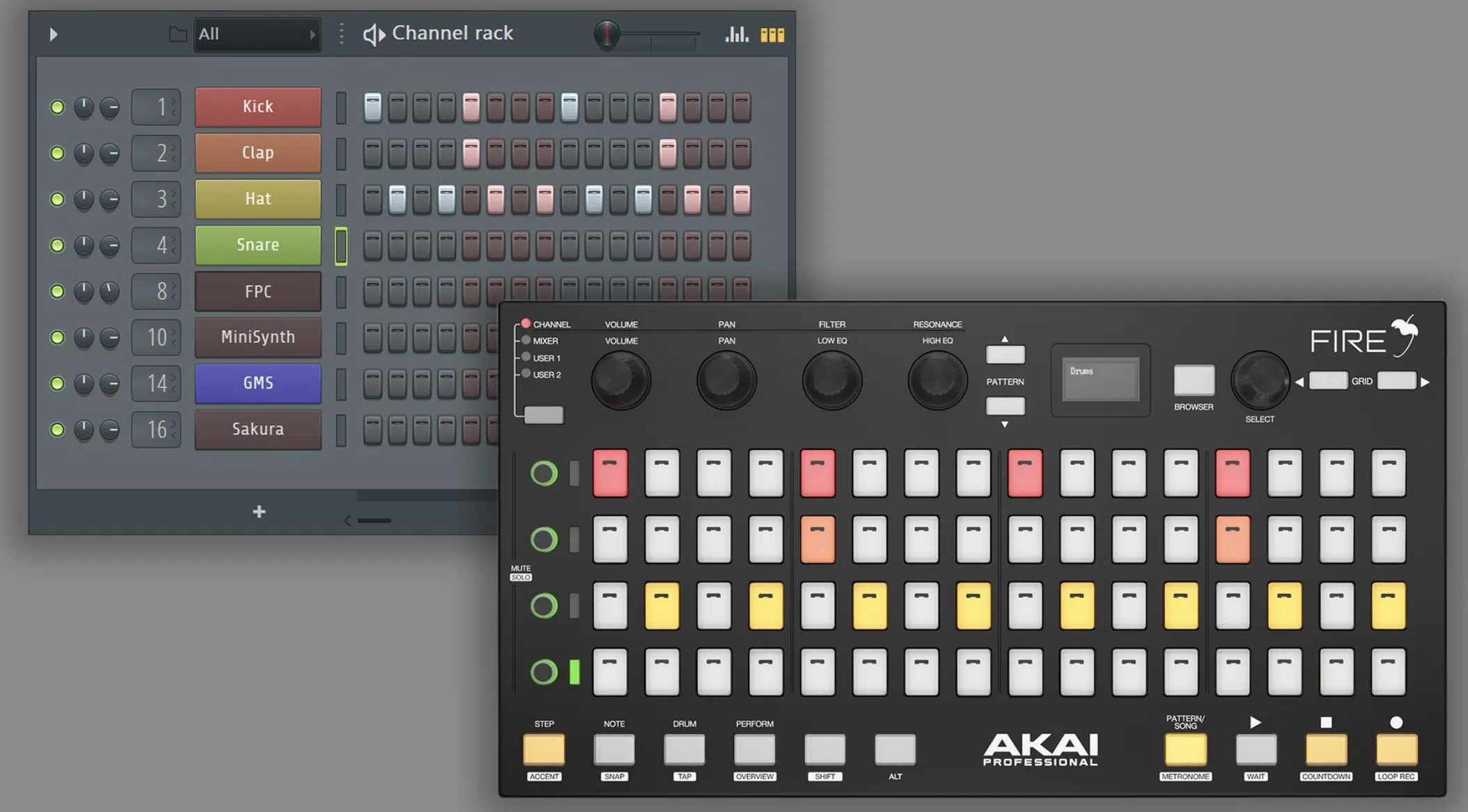
Step sequencers are the unsung heroes of modern beat production, especially in hip-hop and trap genres.
By offering a grid-like interface, a step sequencer allows for intuitive beat creation, one step at a time.
For instance, by using a step sequencer, you can:
- Craft a booming 808 bassline
- Layer it with sizzling hi-hats
- Have a groove ready to be tweaked
Devices like Roland’s iconic drum machines or the modern Arturia Beatstep Pro often come with built-in step sequencers.
This makes beat creation an interactive and tactile experience.
NOTE: It’s not just about laying down beats, as advanced step sequencers in DAWs like Ableton offer intricate automation features.
With a few clicks, one can introduce dynamic changes with a step sequencer 一 imparting your tracks with evolving textures and grooves.
Embracing step sequencers can significantly streamline your beat-making process.
Whether you’re composing moody trap songs or energetic EDM drops, a step sequencer offers the precision and speed that modern producers crave.
If you’d like to know everything about step sequencers, we’ve got you covered.
-
How to Create the Perfect Rhythm
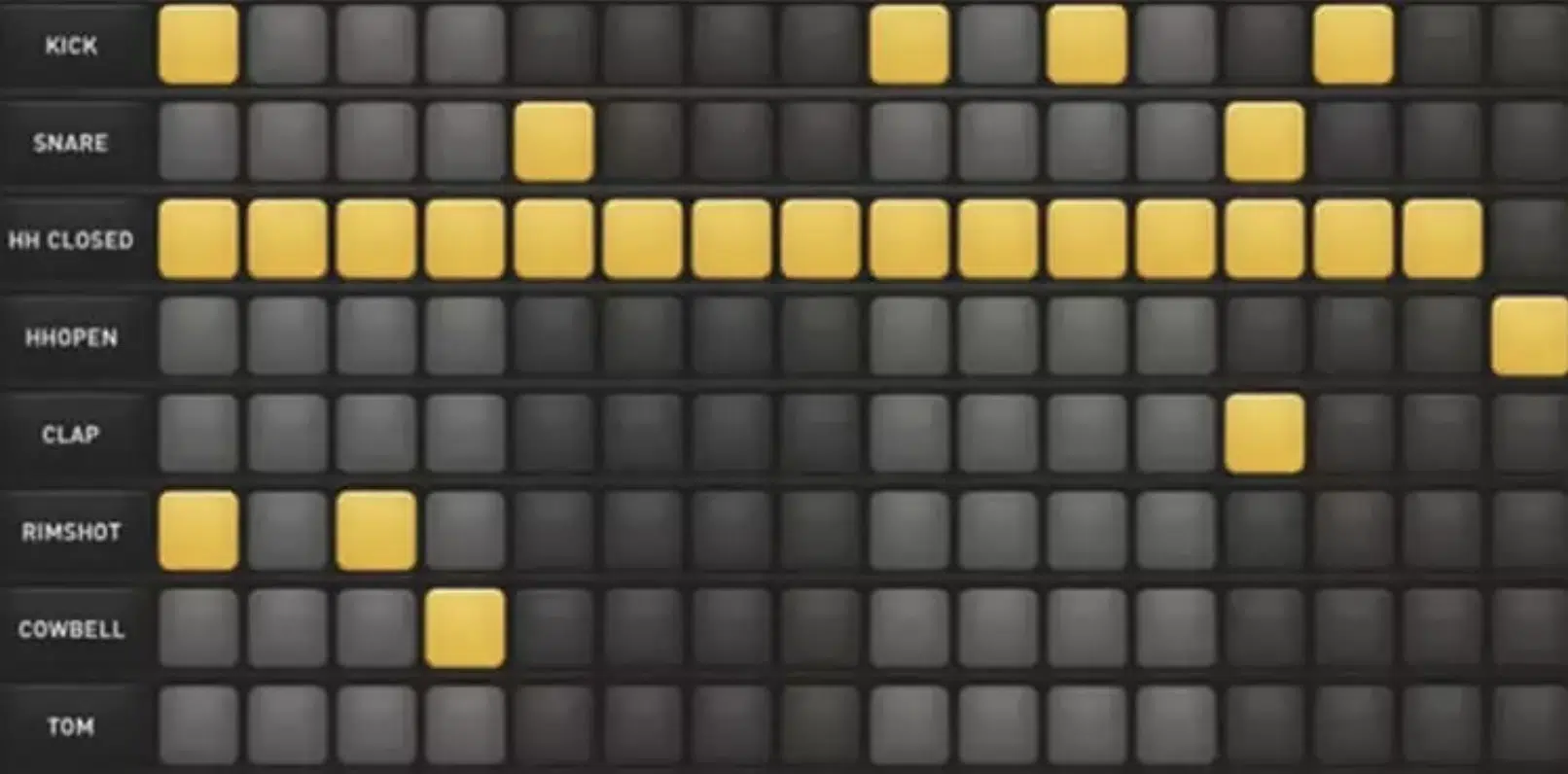
While step sequencers provide a broad palette, drum sequencers are specifically tailored for rhythm.
These specialized tools can be the difference between a basic beat and a chart-topping groove.
Drum sequencers (like Roland’s TR series or software incarnations in DAWs) allow you to successfully:
- Layer
- Sequence
- Tweak drum sounds
Consider the hi-hats in trap music…
By using a drum sequencer, you can craft intricate patterns, from rapid-fire 16th notes to stuttered triplets, all while automating pitch and velocity for that signature sound.
Remember, the beauty of sound lies in the details.
With a drum sequencer, micro-timing adjustments can be made 一 ensuring that snares snap, and kicks thump appropriately.
For producers set on refining their rhythm game, investing time in mastering drum sequencers is non-negotiable.
They not only enhance your tracks but also infuse them with a unique rhythmic identity.
-
The Bridge to Your Analog Synths
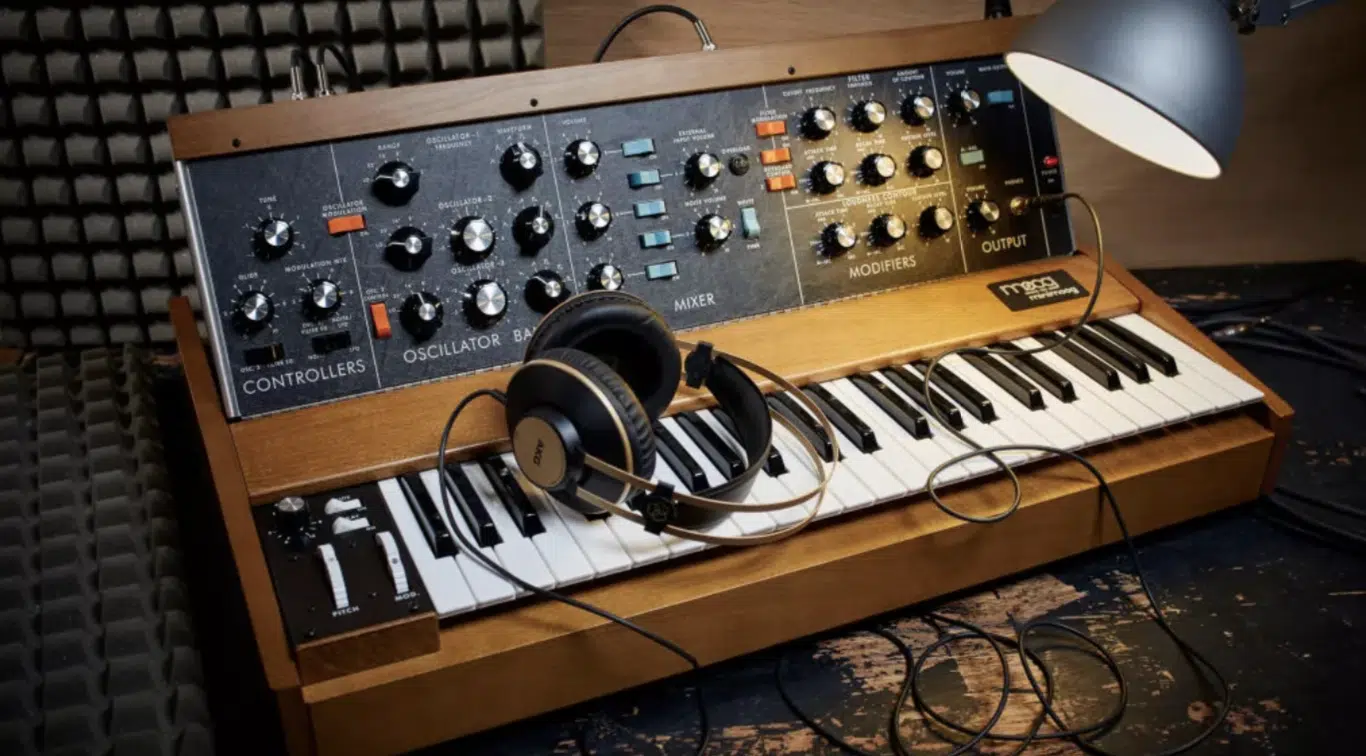
In the digital age, the charm of analog synthesizers remains undiminished, as the warm, rich tones of a Moog or a Korg are unparalleled.
But how do we successfully and efficiently merge the old with the new?…
Enter: MIDI CV Gate.
CV (Control Voltage) was the primary means of interfacing with analog synths before the age of MIDI.
While MIDI sends digital signals, a CV gate transmits continuous electrical voltages to control parameters like pitch and gate.
MIDI to CV converters, therefore, act as a bridge 一 enabling modern sequencers to communicate with and control vintage synths.
This fusion brings the best of both worlds:
- The tactile joy of analog synths.
- The precision of digital sequencing.
For producers who harbor a love for vintage gear but also appreciate the conveniences of modern MIDI sequencers, MIDI CV Gate integration is the key to a harmonious setup.
As the lines between digital and analog blur, more devices are being launched with integrated MIDI and CV gate capabilities.
This ensures seamless connectivity and expanding sonic horizons.
-
Patterns & Automation: Enhancing Your Tracks
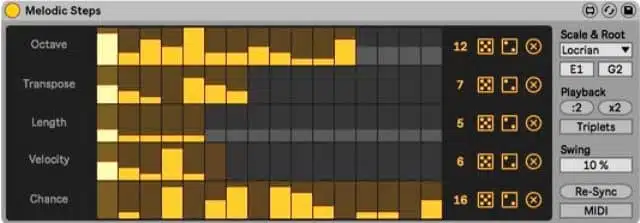
While the base sequence lays the foundation of a track, the variations, shifts, and dynamics give it life.
Patterns and automation are crucial tools to achieve this dynamism.
Patterns are essentially sequence variations, and switching between patterns can introduce a new melody or rhythm.
Pattern-based inclusions can even bring a new and alluring texture to a track 一 making it evolve over time.
Automation, on the other hand, is the process of automatically changing parameters over time.
From the simple fade-in of a track to intricate filter sweeps, automation breathes life into a static sequence.
Modern MIDI sequencers (especially in DAW environments) provide intricate tools for automation.
Drawing curves for volume, panning, or any synth engine parameter becomes an expressive act, like playing an instrument.
Embracing patterns and automation is more than a technical exercise.
It’s a creative endeavor that enhances your tracks, making them more engaging, dynamic, and emotionally resonant.
MIDI Connectivity
With endless devices (vintage hardware sequencers and modern variations) populating studios, connectivity is more crucial than ever.
Let’s explore how MIDI brings coherence to this process.
-
The Critical Role of MIDI Interface in Audio Recording
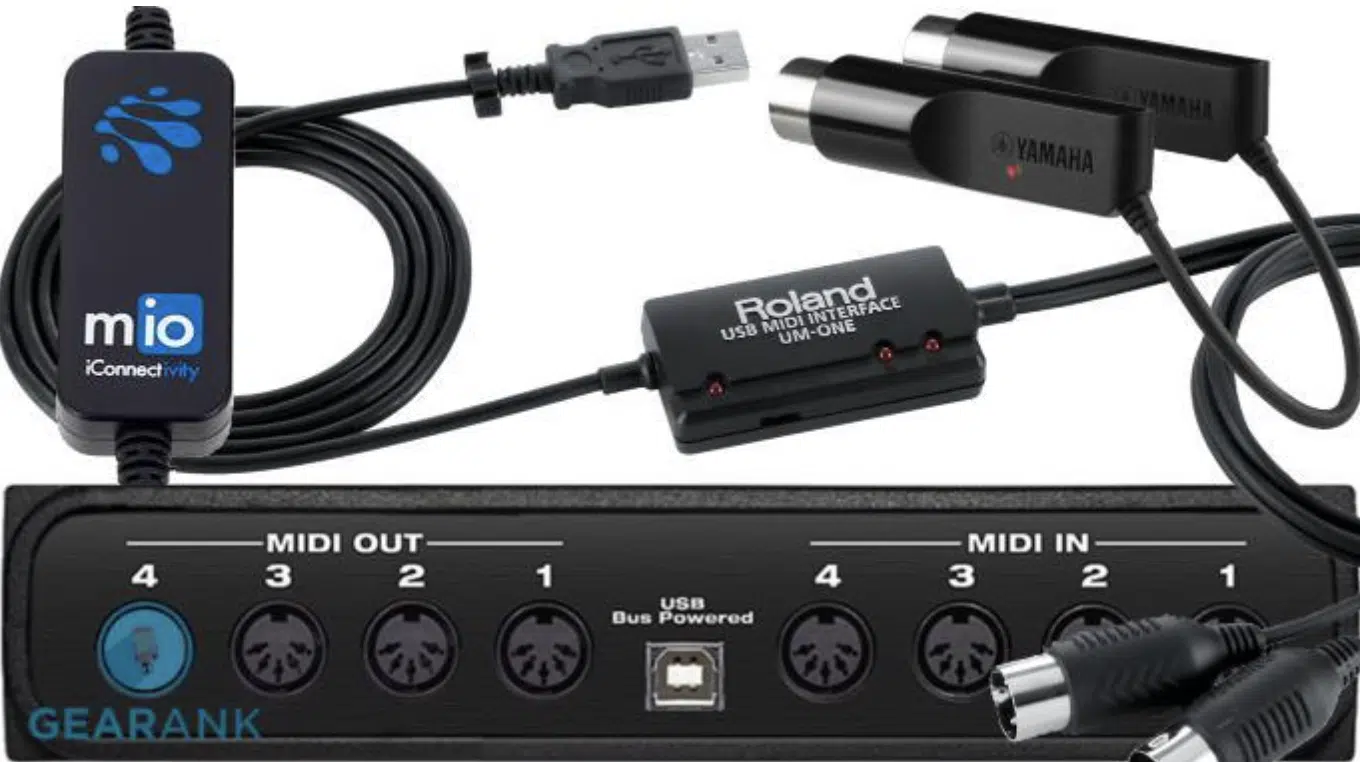
The MIDI interface is often seen as the unsung hero of a professional studio setup.
Acting as the central hub, a MIDI interface ensures that all your devices communicate effectively.
While a MIDI sequencer crafts sequences, it’s the MIDI interface that transmits these sequences to various devices, like:
- Synths
- Drum machines
- Digital effects units
Advanced MIDI interfaces come equipped with multiple inputs and outputs 一 allowing for complex setups where devices can be interconnected in various configurations.
A high-quality MIDI interface ensures minimal latency in audio recording, where timing is paramount.
Therefore, it helps ensure that all devices play in perfect sync and your track can truly shine.
-
USB Connectivity & MIDI Input: A Seamless Workflow
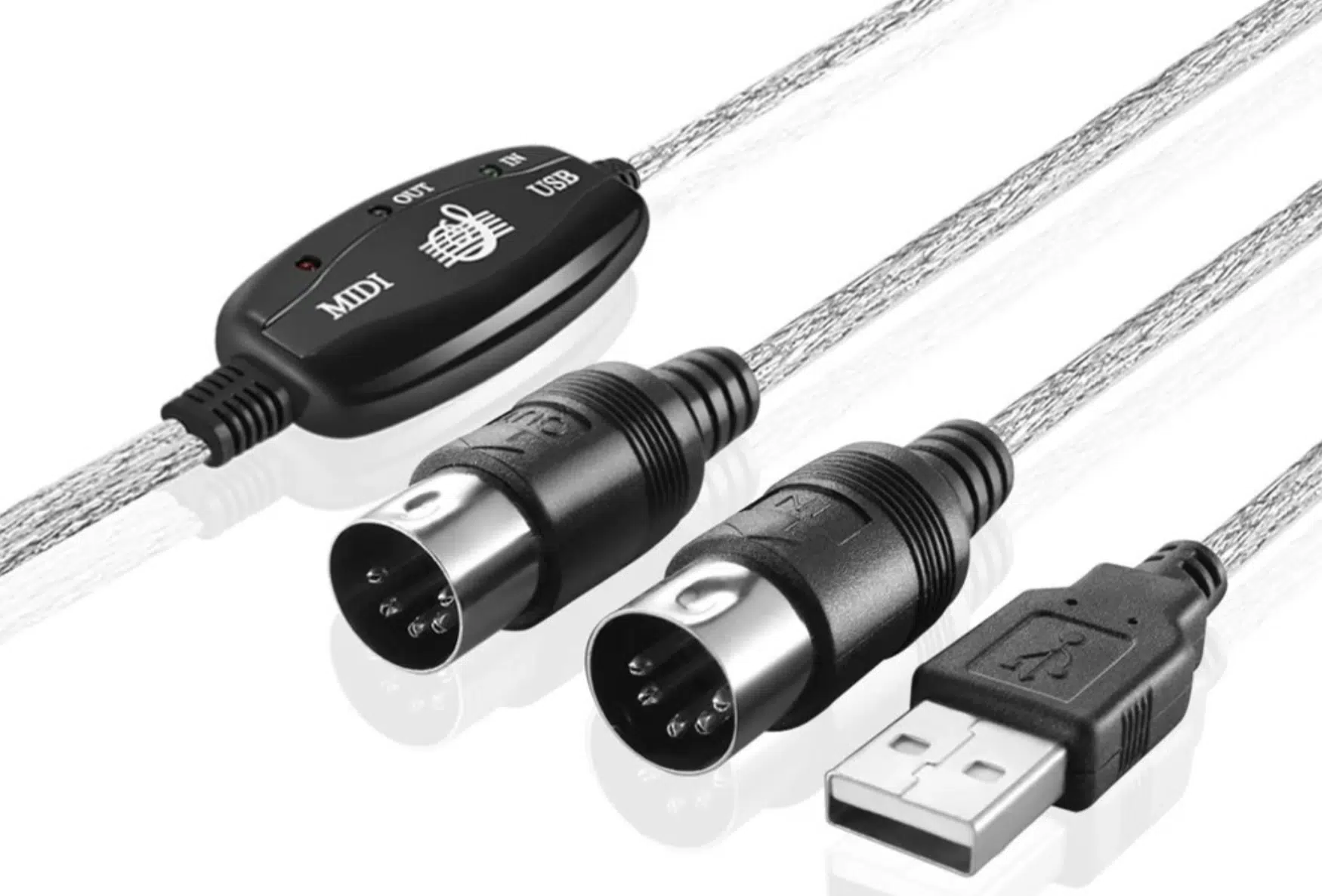
The ubiquitous USB has transformed MIDI connectivity.
Many modern MIDI devices, from controllers to sequencers, now feature USB ports, which ensures quick and easy integration with computers/DAWs.
This seamless connectivity that a USB port offers can accelerate and enhance workflow.
Plug in a MIDI controller via USB, and you’re instantly ready to:
- Craft sequences
- Play virtual instruments
- Even control your DAW’s mixer
However, the convenience doesn’t end at connection, as USB-powered devices eliminate the need for external power sources.
This means, no more clutter surrounding your beat production workspace.
Plus, as technology advances, data transfer speeds via USB have skyrocketed, ensuring real-time, lag-free performance.
As you know, this is a must for any successful music producer.
-
Why SD Card Slots are Becoming Essential in MIDI Gear

As the demand for portability and convenience grows, SD card slots in MIDI gear have become indispensable.
From storing samples to saving sequences, the benefits are invaluable.
NOTE: Devices like a sampler or groove box with SD card support allow you to carry vast libraries of sounds and sequences in a pocket-sized card.
Plus, the quick transfer capabilities of SD cards ensure that switching between projects or loading new samples is a breeze.
With the rise of live electronic music performances, having an SD slot ensures that you can easily:
- Backup
- Transfer
- Access your projects on the fly
This enhances flexibility, versatility and, not to mention, peace of mind.
So, as stages and studios become increasingly digitized, an SD card slot becomes an indispensable asset.
It can help ensure that you are always prepared, efficient, and extremely professional.
Specialized MIDI Sequencing Tools
As MIDI sequencing evolves, a range of specialized tools has emerged 一 catering to all your musical needs.
For this section, let’s break down some of these game-changers.
-
Drum Machines & Samplers
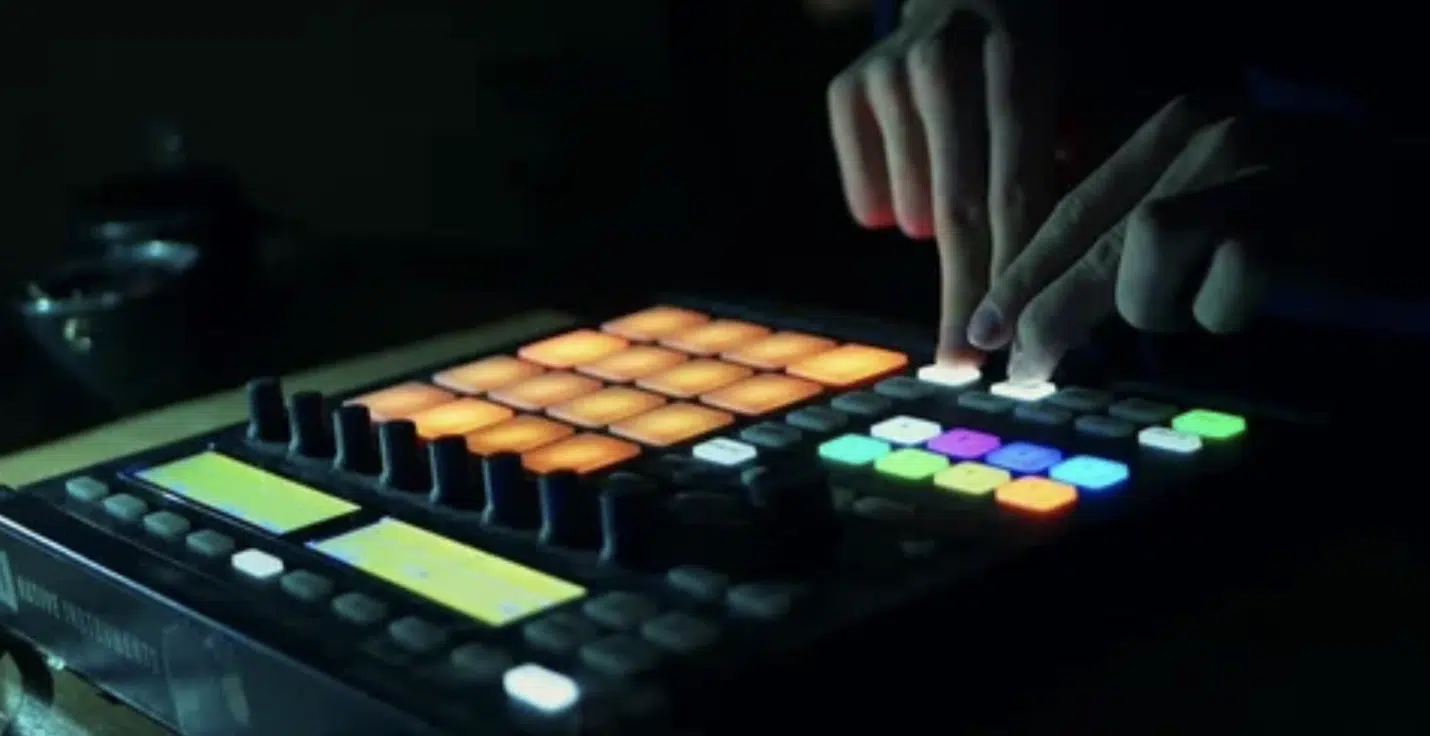
Drum machines and samplers have been foundational in genres ranging from hip-hop to electronic music, and everything in between.
These standalone devices often come with built-in MIDI sequencers, marrying rhythm with sequence.
Drum machines like the TR-8S or Elektron’s Digitakt offer iconic drum sounds and intricate sequencing capabilities.
From micro-timing adjustments to sample layering, the possibilities are endless with drum machines.
A sampler, on the other hand, allows you to capture, manipulate, and sequence virtually any sound imaginable.
Whether it’s a chopped vocal or an ambient field recording, samplers like Akai’s MPC series make sequencing these sounds intuitive.
The convergence of sampling and sequencing opens up a world of sonic exploration.
Certain processes have become an explorative journey, rather than just a technical one, like creating:
- Unique beats
- Textures
- Melodies
As technology advances, these devices are becoming more compact, powerful, and integrated.
With built-in effects, advanced sequencing, and vast sound libraries, they are pivotal in modern music production.
NOTE: For the live performer, drum machines and samplers with MIDI capabilities offer the ability to craft and manipulate beats on the fly.
This can turn each unique performance into a memorable, captivating experience.
-
MIDI Arpeggiator: Bringing Life to Your Melodies
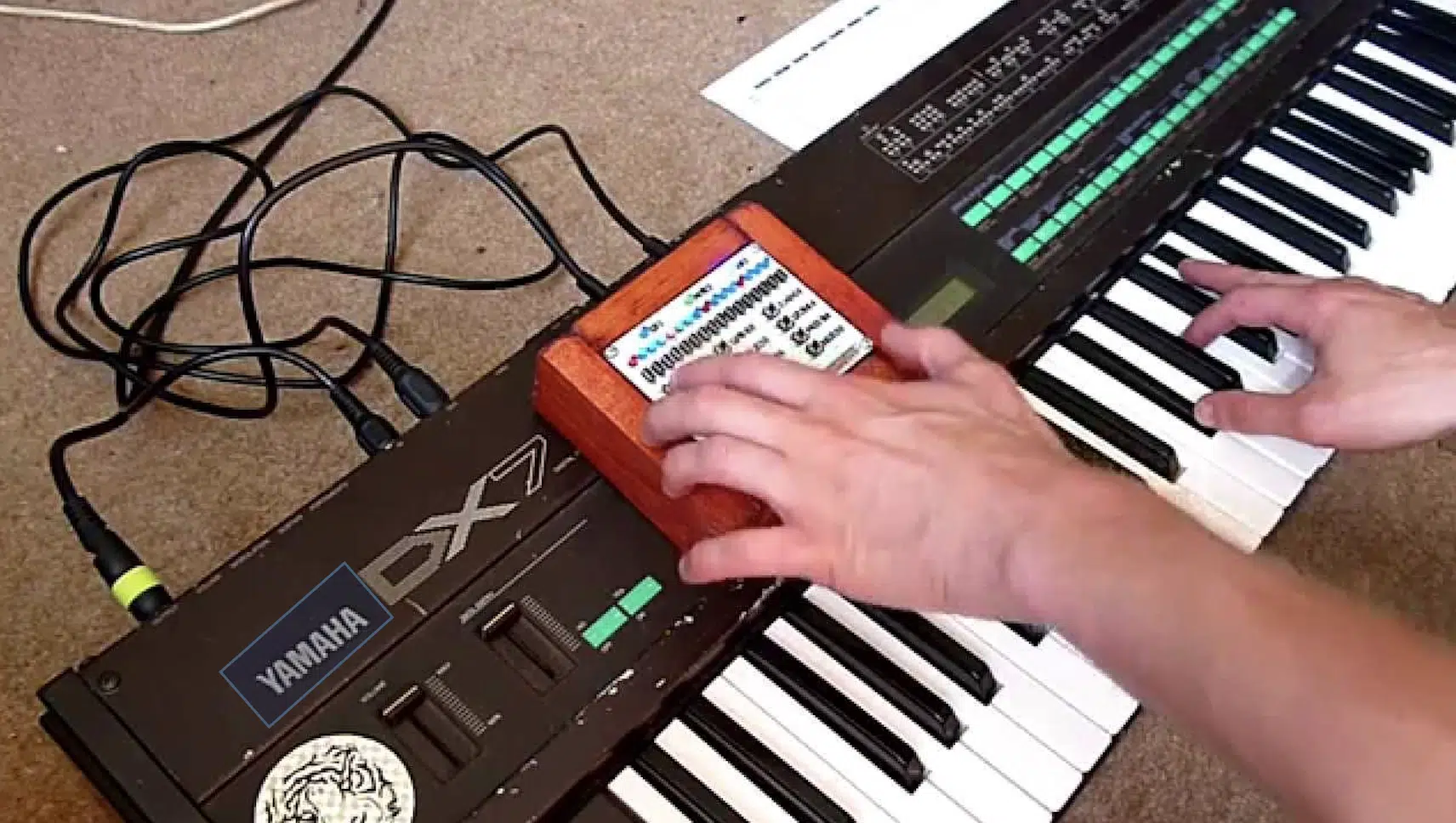
Arpeggiators hold a special place in the world of hip-hop and electronic music.
They can infuse tracks with movement and energy by automatically playing notes in a sequence based on a chord.
From the shimmering sequences in trance music to the pulsating basslines in techno, MIDI arpeggiators are versatile tools in a producer’s toolkit.
Modern MIDI keyboards often come with built-in arpeggiators 一 allowing you to craft and modify sequences in real-time.
By tweaking parameters, a simple chord can be transformed into a mesmerizing sequence.
This parameters typically include:
- Rate
- Gate
- Swing
DAWs like Ableton Live or FL Studio also offer software-based arpeggiators, providing deeper control and integration with other MIDI devices.
NOTE: Mastering the MIDI arpeggiator is more than just a boring technical skill.
It’s an expressive tool that can enhance your tracks with layers of intricacy and dynamism, which is super important to stand out.
-
Sequencing in DAWs: Ableton Live, FL Studio, & Cubase
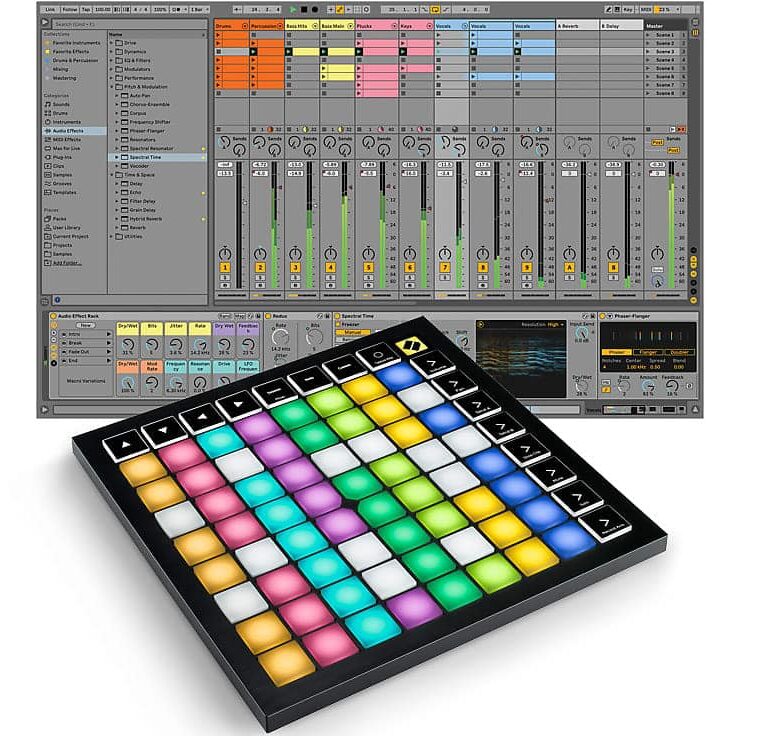
DAWs, as we briefly touched upon, have completely transformed music production, providing powerful MIDI sequencing tools tailored for the digital age.
Ableton Live, with its clip-based sequencing, offers an intuitive approach, especially for live performances.
Its unique Session View allows you to trigger and manipulate sequences on the fly; making it a favorite for electronic music artists and DJs.
FL Studio, another giant in the DAW world, boasts a step sequencer at its heart.
This grid-based DAW system allows for rapid:
- Beat construction
- Layering
- Manipulation
Plus, it’s legendary Piano Roll is also renowned for its intuitive design 一 offering detailed editing of MIDI notes, velocities, and automation.
Cubase, a long-standing DAW in the industry, offers intricate MIDI editing tools.
With its Key Editor, List Editor, and Drum Editor, you can dive deep into your sequences, ensuring every note and nuance is precisely where it needs to be.
Beyond their features, these DAWs also provide robust MIDI routing capabilities.
This means that external MIDI devices, virtual instruments, and even other DAWs can be interconnected, allowing for a seamless production environment.
Understanding the nuances of each DAW and its MIDI sequencing capabilities can elevate your beat production workflow.
As well as ensure that your creative visions are executed with precision and flair.
-
Syncing Your MIDI Gear for Seamless Control
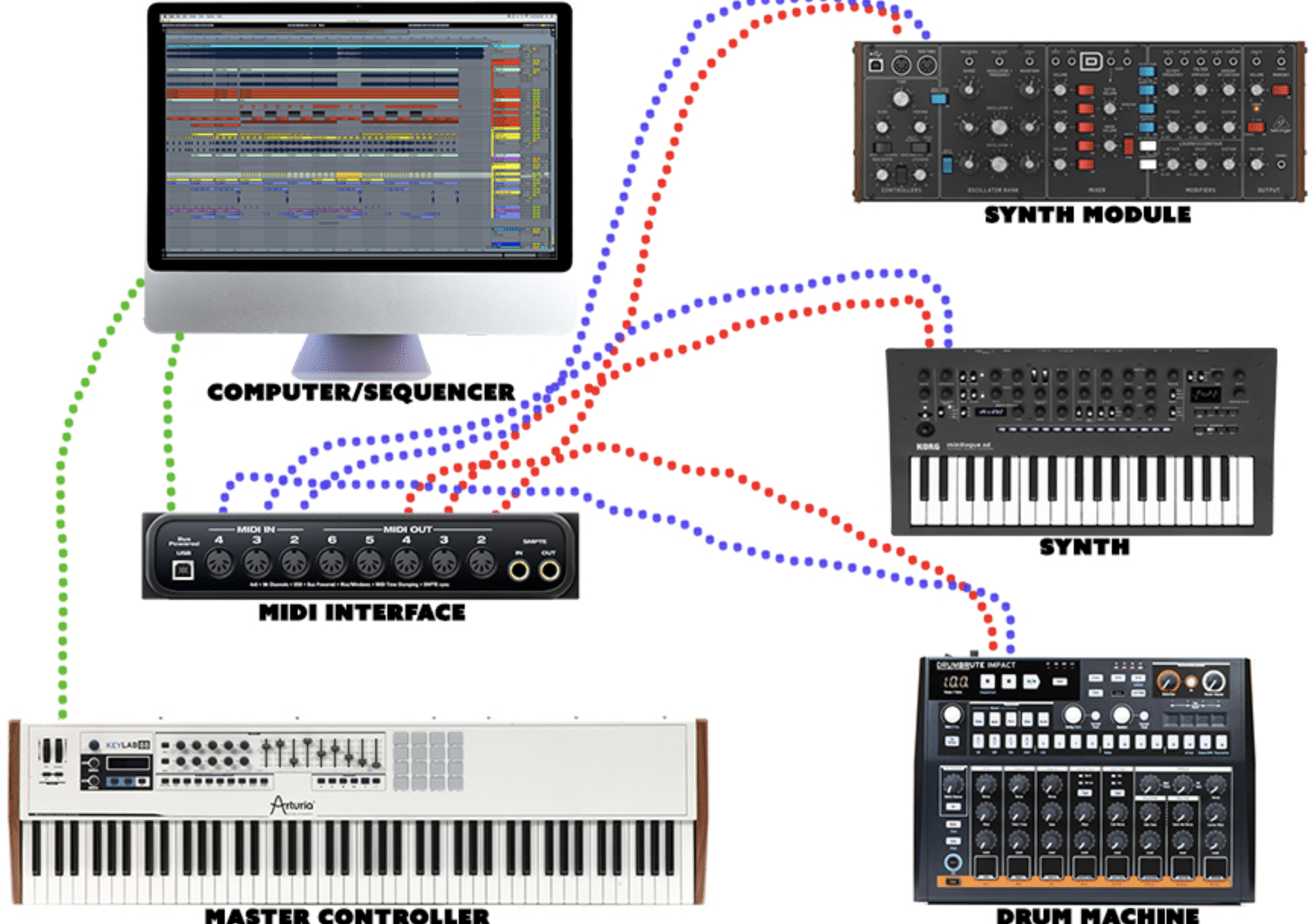
As your studio grows and more gear is added, the importance of syncing becomes paramount.
A symphony of devices, all playing in harmony, requires meticulous synchronization.
NOTE: The MIDI clock signal is the unsung hero, ensuring that sequencers, drum machines, and effects units play in time (following a central tempo).
Devices can be set to send (master) or receive (slave) this clock signal.
For instance, a central drum machine might act as the master 一 sending its tempo to other devices to ensure a coherent rhythm.
Beyond simple clock signals, advanced synchronization methods like MIDI Timecode (MTC) offer frame-accurate syncing.
This is crucial for aligning music with visuals or syncing multiple DAWs.
With the advent of wireless MIDI and over-the-internet collaborations, syncing also ventures into the digital realm, so collaborators across the globe can stay in touch.
Mastering synchronization ensures that your MIDI gear works in concert.
This amplifies each device’s potential and magically elevates the overall music production experience.
MIDI Sequencer: Final Thoughts
There’s a profound beauty in how MIDI sequencing intertwines with the very essence of music production.
Our extensive exploration shows that a MIDI sequencer isn’t just a tool 一 it’s the bridge between your imagination and the unique tracks you create.
From the historical journey of MIDI in shaping digital music to the precise techniques that bring our tracks to life, MIDI sequencing stands supreme.
But the beauty of MIDI doesn’t stop there…
While understanding and mastering MIDI sequencers is pivotal, the chord progressions you choose can make or break a track.
That’s where the Free Essential Advanced MIDI Chord Progressions pack comes into play.
Designed to seamlessly complement your newfound MIDI sequencing knowledge, this iconic pack is not just about chords.
It’s about unique, mesmerizing progressions that weave magic into your tracks.
Boasting 24 distinct progressions, it promises to elevate your tracks in ways you’ve never imagined.
In a world where most producers are restricted to rudimentary chords, these legendary progressions place you leagues ahead of your competition.
Your soundscapes will be untouchable, and your tracks will be unmatched.
So, as you embark on your next production venture, remember: the intricacies of MIDI sequencing have the potential to create not just tracks, but legacies.
Dive deep, explore, and let the world of MIDI be your guide to unparalleled musical heights.
Until next time…







Leave a Reply
You must belogged in to post a comment.